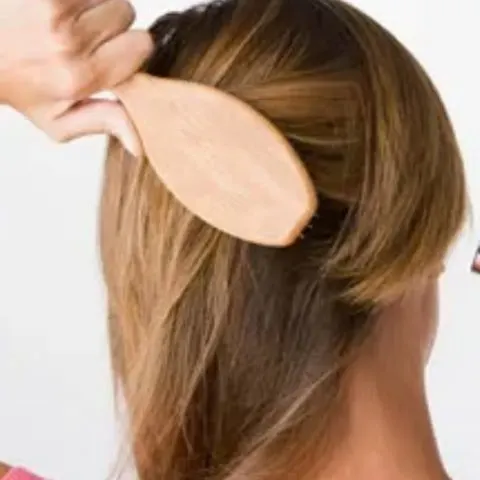While a hairdryer is ideal for faster hair drying and creates sleek hairstyles, it is also one of the leading causes of damaged hair that can cause your hair to break off and thin.
In most cases, heat damage is barely noticeable, especially if you have straight hair. Until your hair thins considerably or you start losing clumps of hair due to breakage.
This is because most hair dryer users fail to realize how much heat a hair dryer produces.
How hot does a hairdryer get?
The average heat setting for a personal hairdryer is 370F (190 degrees Celsius), while a commercial hair dryer can get as high as 410F (210 degrees Celsius). The highest temperature ranges from brand to brand.
Is this heat enough for hair?
It depends on your hair texture. Coarser hair requires a higher heat setting to straighten it, while finer hair requires a lower heat setting. To ensure that you do not damage your hair, you need to realize that a higher heat setting does not translate to a better blow drying outcome.
Extreme heat exposure will weaken hair strands causing them to break. The damaged strands may also have denatured protein bonds, causing them to have split ends and open cuticles, making them lose moisture and become dryer, leading to frizzy hair over time.
Can this heat harm you?
Exposure to extreme heat can lead to burns, particularly when you blow-dry your hair straight out of the shower. Additionally, mishandling the hairdryer may lead to skin burns if the hairdryer shell does not have Cool Touch technology. Or if the heating elements are exposed.
What determines how hot a hairdryer gets?
The heating element. Hairdryers generate heat by passing an electric current through a wire, which is then blown by a fan for the dryer effect. The heating temperature depends on the wire material. The higher the heat resistance of the heating element, the higher the temperature.
Metals such a copper and nichrome can be able to tolerate higher temperatures without rusting over time.
How to Use Your Hair Dryer More Efficiently and Safely
To avoid heat damage, you can use several blow drying techniques to get the same results as a professional blowout while using less heat.
Air dry first
Blow drying wet hair takes longer than blow-drying dry or damp hair. This will reduce heat exposure, thus reducing the amount of damage inflicted on your hair.
Use a heat protector.
If you have to use a higher heat setting, use a heat protectant like this Argan Oil Hair Protectant Spray to reduce heat effects on your hair.
Blow-dry in sections
The smaller the hair sections, the easier it is to dry, thus reducing heat exposure. It will also make it easier to dry your hair entirely and get a better blowout result.
Use the correct hairbrush.
Avoid using a metal brush when drying your hair. This is because it will get too hot too fast without necessarily giving you the desired result. A boar brush will help to get better results without adding extra heat exposure to your hair.
Hairdryer position
Hold your hairdryer at a considerable distance from your hair. This will minimize direct heat exposure. For easier blow-drying, hold the hairdryer horizontally. This will reduce strain on your hands and make it easier to dry your hair thoroughly, much faster.
Check this too: How to Unclog a Kitchen Sink
Use the correct hair dryer attachment.
Different hair dryer attachments have different uses, and follow your hairdryer manual instructions to decide which hair dryer attachment is best for your hair needs.
Clean your hairdryer
Lastly, clean your hair dryer vent regularly to reduce lint build-up. This will make it perform better, eliminating the need to increase heat temperature due to low heat output.

